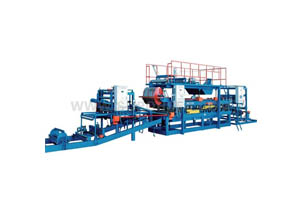Keywords: Fully Hydraulic Rope Core Drilling Rig, Rock Wool Production Line
What Is The Difference: Fiberglass vs Mineral Wool Insulation
For nearly 80 years, fiberglass insulation has been the most popular home insulation material. The reasons are easy to understand: fiberglass is affordable, easy to install, easy to provide in a variety of sizes, and most importantly, it is an excellent insulator.
The fiberglass insulation material is woven from fine glass fibers, lightly compressed, and then cut into long rolls or batting. It is available with kraft paper or aluminum foil as well as unfaced. Fiberglass can also be used as a loosely filled insulating material, which can be applied by hand or blown into place by a mechanical blower.
Interestingly, the invention of fiberglass insulation is purely accidental. In the early 1930s, a researcher tried to create a vacuum seal between glass blocks, when a high-pressure air stream blows the molten glass into fine fibers. This accidental discovery led to the first large-scale production of fiberglass, which was eventually used to make fiberglass insulation.
Today, fiberglass is still the undisputed king of insulating materials, but its crown is being threatened by a relatively new insulating material: mineral wool.
Mineral wool, also commonly referred to as rock wool, has cotton wool that is easy to install, similar to fiberglass. But rock wool is not made of fluffy glass fibers, but made of volcanic rock (mainly basalt). It was also invented by accident. At that time, it was discovered that during a volcanic eruption, strong winds often blow molten lava into fine threads, similar to wool. This discovery eventually led to the manufacture of rock wool insulation materials.
Mineral wool production
To make mineral wool insulation, basalt and industrial slag are melted in a 3000°F furnace. (slag is a by-product of steel production and is usually landfilled.) Next, the superheated liquid is placed in a high-pressure air stream and then spun into filaments. These threads are compressed into thick mats and then cut into insulating batting.
Now that you have a basic understanding of fiberglass and mineral wool, let's take a look at the difference between these two popular insulating materials.
Fiberglass vs. mineral wool: how they stack up
R-value: The thermal resistance of insulation is measured by the generally said r-value, the higher the r-value, the better. The r-value of fiberglass is approximately 2.2 to 2.7 per inch of thickness. The r-value of mineral wool is slightly higher, between 3.0 and 3.3 per inch.
Size: Fiberglass insulation material has a wider range of sizes and types than mineral wool. Mineral wool insulation materials can usually only be used in faceless batting.
Sustainability: Mineral wool is composed of 70% or more recyclable components. Fiberglass insulation materials usually contain 20% to 30% recyclable components.
Cost: The insulation cost of fiberglass is 25-50% lower than that of mineral wool.
Density: Mineral wool insulation has superior sound insulation performance. Its density is 1.7 pounds per cubic foot, in contrast, the density of fiberglass is 0.5 to 1.0. Due to its density, mineral wool is difficult to compress. On the other hand, if it is compressed too tightly, the fiberglass will lose some of its insulating value.
Weight: Fiberglass is very light and easy to carry, but the bat is soft and difficult to set up. Mineral wool is heavier than fiberglass, but bats are also harder, so they will not bend or tip over easily.
Water resistance: Mineral wool insulation material is hydrophobic, which means it has strong moisture and water resistance. Since it does not absorb water, mineral wool will not promote the growth of rot, corrosion, fungus, mold, mildew, or bacteria. If the fiberglass insulation material gets damp, it will get damp, and the insulation value will drop significantly.
Loose-fill: Loose-fill fiberglass insulation provides a quick, simple and economical way to insulate attic floors and wall holes. Loose-filled mineral wool does exist, but it is difficult to find.
Fire resistance: Mineral wool has strong fire resistance and can be used as a refractory material. Fiberglass insulation is non-flammable, but not as fire-resistant as mineral wool.
We provide you with a rock wool sandwich panel machine. If you are interested in our products, please feel free to contact us.

Rock Wool Production Line